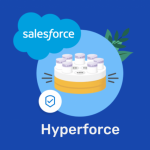Data integration has become a critical component for businesses leveraging big data cloud computing to drive strategic decisions and operational efficiencies. Salesforce Data Cloud stands as a robust platform for managing and integrating diverse data sources, enabling real-time analytics and insights. This article delves into the top 10 best practices for data integration in Salesforce Data Cloud, ensuring optimal performance, data quality, and compliance.
1. Define Clear Objectives and Scope
Why It Matters
Before embarking on data integration, it’s essential to have a clear understanding of what you aim to achieve. Whether it’s improving customer insights, enhancing operational efficiency, or driving better decision-making, defining your objectives will guide the entire integration process.
Best Practices
- Set Specific Goals: Identify key performance indicators (KPIs) that you want to influence through data integration.
- Scope Management: Clearly define the scope of the integration project to avoid scope creep and ensure that all stakeholders are aligned.
2. Ensure Data Quality from the Start
Why It Matters
The accuracy and reliability of your data directly impact the insights you can derive from it. Poor data quality can lead to erroneous conclusions and ineffective strategies.
Best Practices
- Data Cleansing: Regularly cleanse data to remove duplicates, correct errors, and fill in missing values.
- Data Profiling: Use data profiling tools to understand the structure, relationships, and quality of your data.
- Continuous Monitoring: Implement ongoing data quality monitoring to catch issues early and maintain high data standards.
3. Leverage ETL Tools for Efficient Data Processing
Why It Matters
Extract, Transform, Load (ETL) processes are crucial for moving and transforming data from various sources into a unified format. Efficient ETL processes ensure that data integration is streamlined and scalable.
Best Practices
- Choose the Right ETL Tool: Select ETL tools that integrate seamlessly with Salesforce Data Cloud and support your data volume and complexity.
- Automate ETL Processes: Automate data extraction, transformation, and loading to minimise manual errors and increase efficiency.
- Optimise Performance: Regularly tune ETL processes for performance, ensuring they run efficiently as data volumes grow.
4. Implement Robust Data Governance Policies
Why It Matters
Data governance is essential for maintaining data quality, security, and compliance. It involves defining policies and procedures for data management throughout its lifecycle.
Best Practices
- Data Ownership: Assign data stewards responsible for data quality and governance.
- Compliance: Ensure your data integration processes comply with relevant regulations such as GDPR and CCPA.
- Security Measures: Implement robust security protocols to protect sensitive data from breaches.
5. Utilise Real-Time Data Integration
Why It Matters
Real-time data integration allows businesses to respond swiftly to changes and make informed decisions based on the latest data.
Best Practices
- Streaming Data Integration: Use tools that support real-time data streaming into Salesforce Data Cloud.
- Monitor in Real-Time: Set up real-time monitoring to ensure data flows smoothly and issues are addressed promptly.
- Leverage APIs: Utilise APIs for real-time data integration from various sources.
6. Maintain Scalability and Flexibility
Why It Matters
As your business grows, so will your data integration needs. Ensuring that your data integration framework is scalable and flexible will save time and resources in the long run.
Best Practices
- Modular Architecture: Design your data integration framework to be modular, allowing for easy scaling and modifications.
- Cloud-Native Solutions: Leverage cloud-native data integration solutions that can scale effortlessly with your data needs.
- Plan for Growth: Regularly review and adjust your data integration strategy to accommodate future growth.
7. Optimise Data Transformation Processes
Why It Matters
Data transformation is a critical step in the integration process, ensuring that data is in the right format for analysis and reporting.
Best Practices
- Standardise Data: Ensure that data from different sources is standardised for consistency.
- Use Metadata: Leverage metadata to automate and manage data transformations effectively.
- Regular Audits: Conduct regular audits of your data transformation processes to ensure accuracy and efficiency.
8. Foster Collaboration Among Teams
Why It Matters
Data integration often involves multiple teams, including IT, data scientists, and business analysts. Effective collaboration ensures that all teams are aligned and working towards common goals.
Best Practices
- Cross-Functional Teams: Establish cross-functional teams to oversee the data integration process.
- Communication Tools: Use collaboration tools to facilitate communication and information sharing among teams.
- Regular Meetings: Hold regular meetings to review progress, address challenges, and align on objectives.
9. Monitor and Optimise Data Workflows
Why It Matters
Continuous monitoring and optimization of data workflows ensure that your data integration processes remain efficient and effective.
Best Practices
- Performance Metrics: Track key performance metrics to gauge the efficiency of your data workflows.
- Identify Bottlenecks: Regularly review workflows to identify and address bottlenecks.
- Continuous Improvement: Foster a culture of continuous improvement, encouraging teams to find and implement enhancements.
10. Invest in Training and Development
Why It Matters
Keeping your team up-to-date with the latest tools, technologies, and best practices in data integration is crucial for success.
Best Practices
- Regular Training: Provide regular training sessions on new tools and best practices.
- Certifications: Encourage team members to obtain relevant certifications in data integration and Salesforce Data Cloud.
- Knowledge Sharing: Promote knowledge sharing through workshops, seminars, and internal documentation.
Conclusion
Data integration is a critical component of leveraging Salesforce Data Cloud effectively. By following these best practices, businesses can ensure that their data integration processes are efficient, scalable, and secure, leading to better insights and informed decision-making.
FAQs
What is Salesforce Data Cloud?
Salesforce Data Cloud is a platform that unifies data from various sources, enabling businesses to integrate, process, and analyse data in real-time. It provides tools for advanced analytics, real-time data processing, and scalable data management.
Why is data quality important in data integration?
Data quality is crucial because it directly impacts the accuracy and reliability of the insights derived from the data. Poor data quality can lead to incorrect conclusions and ineffective strategies.
What are the benefits of real-time data integration?
Real-time data integration provides immediate insights, allowing businesses to make timely decisions. It enhances customer experiences by enabling real-time personalisation and improves operational efficiency by providing up-to-date information.
How can ETL tools improve data integration?
ETL tools streamline the process of extracting, transforming, and loading data from various sources into a unified format. They automate complex tasks, ensure data consistency, and enhance the efficiency of data integration processes.
What is data governance and why is it important?
Data governance involves defining policies and procedures for managing data throughout its lifecycle. It ensures data quality, security, and compliance, protecting sensitive information and maintaining regulatory standards.
How TTC Group Can Help You with Data Integration in Salesforce Data Cloud
At TTC Group, we specialise in providing comprehensive data integration services for Salesforce Data Cloud. Our team of experts can help you navigate the complexities of data integration, ensuring seamless integration of your data sources, robust data governance, and enhanced data analytics. We leverage the latest technologies and best practices to provide tailored solutions that meet your unique business needs. Contact us today to learn how we can help you leverage Salesforce Data Cloud to its full potential.









